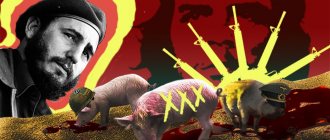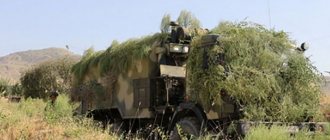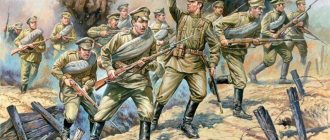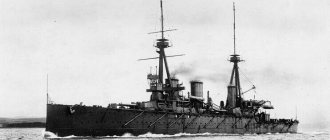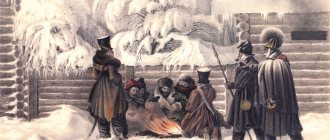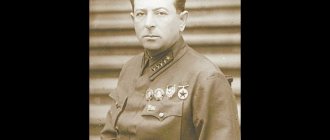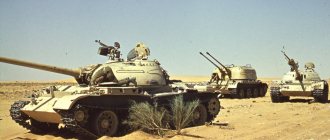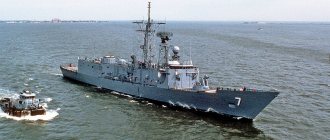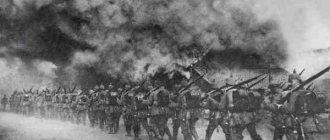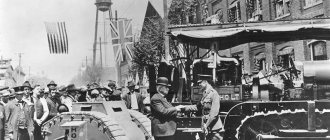Battle of the Mariana Islands. Rehearsal for destruction in Leyte Gulf
The decisive success of US naval aviation in the Philippine Sea, which brought victory in World War II closer. Read the new material from the creators of World of Warships!
The Pacific Ocean is the largest ocean on the planet. During World War II, these vast expanses of water and the thousands of islands scattered across them became a battlefield for the navies of the Japanese Empire and the United States of America. It was here that the largest naval battles of World War II took place.
If in the first stages of the war the Imperial Navy won confident victories, then soon the initiative passed to the Americans. At the beginning of 1944, Japan could only defend itself. The imperial command continued to stubbornly believe that it could force a general battle on the enemy and win. But in reality, this only delayed the inevitable defeat. The Americans were superior in numbers, technical support, and level of training of flight personnel. The latter was especially lacking in Japan, since it was aviation that determined the principles of the war in the Pacific.
By the summer of 1944, the Japanese command adopted Operational Plan A. The new line of defense would run through the central Mariana Islands to Palau and south to New Guinea. The imperial admirals understood perfectly well that the Mariana Archipelago, far from the Japanese Islands, would become a base for US strategic aviation. For the Americans, capturing these islands would allow them to deploy squadrons of long-range bombers for follow-up attacks on enemy territory.
Map of the Mariana Islands and the area of the Pacific Ocean where the battle took place on June 19-20, 1944
To break through the Japanese defense line, the Americans sent the 5th Fleet under the command of Admiral Raymond Spruance. On June 11, carrier-based aircraft began striking Japanese positions on the islands. The 1st Air Fleet protecting them was partially destroyed. Already on June 15, two marine divisions landed on the island of Saipan - bloody battles for the island began. The Japanese command immediately responded to this, on the same day ordering the commander of the First Mobile Fleet, Vice Admiral Jisaburo Ozawa, to attack and destroy the enemy troops. However, the ships needed time to refuel, and the fleet was brought into full combat readiness only on the 19th.
The forces of the Imperial Navy consisted of 5 heavy and 4 light aircraft carriers, 5 battleships, 13 cruisers, 23 destroyers and 6 tankers. The air groups consisted of up to 440 different carrier-based aircraft. At the same time, Ozawa received unreliable reports from Vice Admiral Kakuta about the state of air groups based on the islands. When the forces of the carrier force were preparing to strike the enemy, coastal aviation practically ceased to exist. Thus, Ozawa was forced to rely only on his own strength.
Meanwhile, Admiral Spruance received a report on the movement of enemy naval forces on June 15th. The 58th Task Force was sent under the command of Vice Admiral Mark Mitscher. It included 7 heavy and 8 light aircraft carriers, which housed up to 900 aircraft. The formation was covered by 7 battleships, 21 cruisers and 67 destroyers.
Admiral Ozawa correctly assumed that the American fleet would be located not far from the landing sites to cover the landing. Therefore, he had greater freedom of action while on the high seas. On June 18, two of the Japanese reconnaissance aircraft detected American formations several times and established their location, but Ozawa decided to launch an attack only the next morning. This could have been an unpleasant surprise for the Americans, since they were not at all expecting attacks that day.
On the night of June 19, messages were exchanged between the headquarters of Spruance and Mitscher. The latter suggested getting closer to the Japanese overnight and striking in the morning. Spruance, in turn, ordered the operation to continue to protect the huge landing fleet conducting the operation against Saipan.
Japanese aircraft carrier IJN Taiho
From 3 to 4 in the morning, Ozawa’s formation formed a battle formation. Remembering the mistakes of past battles, the admiral ordered the battleships and cruisers to raise 16 reconnaissance aircraft. At 05:15, the second group of reconnaissance aircraft took off - 13 carrier-based aircraft and 1 seaplane. At 07:30, the scouts of the first group noticed one of the American formations, after which Ozawa ordered the air groups to be prepared for departure. The first wave of 59 aircraft took off from Admiral Obayashi’s aircraft carrier division. These were mainly “Zeros” equipped with 250 kg bombs. A little later, other Japanese aircraft carriers began releasing their groups. By 9 o'clock in the morning, another 129 aircraft took off.
Around 10 a.m., radar operators from the American battleship Alabama made contact with multiple air targets. Admiral Mitscher ordered the data to be rechecked. As soon as confirmation arrived from the battleship Iowa, an alarm was declared throughout the entire formation. The dive bombers and torpedo bombers preparing for takeoff were lifted into the air to clear the takeoff decks of the ships for the fighters. While the Japanese hesitated to attack, the Americans managed to lift up to 30 Grumman F6F Hellcats into the air. They intercepted the first wave of Japanese. The planes that broke through were stopped by a wall of fire created by anti-aircraft gunners from the ships. During this attack, more than 40 Japanese aircraft were destroyed, while the Americans lost only 1 fighter. The battleship South Dakota was hit by a 250-kg bomb (losses amounted to 50 people killed and wounded), and Indiana was hit by a downed plane, which did not cause much damage to the ship.
A larger second wave of Japanese aircraft attacked an hour later. But, like the previous time, most of the attackers were met by American fighters. Significantly superior to the Japanese in flying skills and quality of equipment, American pilots shot down one plane after another. The small group that managed to break through the interceptors came under heavy air defense fire from the battleships. Only 6 D4Y Judys and a few B6N Jills were able to reach the carriers, but the close explosions of the bombs they dropped caused almost no damage. On American ships, 4 people were killed and several dozen more were wounded. The Japanese used a small trick with setting false targets: special aircraft dropped dipole reflectors to create false targets for radars.
American aircraft carrier USS Bunker Hill during the battle on June 19, 1944
At 10 o'clock in the morning, Ozawa took off the third wave - 47 aircraft. They wandered for a long time over the endless expanses of the Pacific Ocean. Some of the pilots got into a fight with American fighters, and 7 of them were shot down. The fourth wave, numbering 82 aircraft, was sent to the point where the American aircraft carriers were discovered by reconnaissance. But its coordinates were transmitted incorrectly. According to the plan, the squadrons did not return to aircraft carriers, but headed to land bases. Most of the fourth wave was detected by the radar of American ships located in the Guam area. And then it was intercepted by fighters from aircraft carriers that were on duty in the air, aimed at them, already during landing. Only 9 aircraft managed to reach their airfields on Guam.
During the entire day, American aircraft did not attack Admiral Ozawa’s formation. But American submarines, which were on duty in their assigned patrol areas, had an excellent opportunity to solve everything on their own. Already at 9 am on June 19, the submarine Albacore was the first to open the scoring in this battle. Its commander noticed the Japanese squadron and launched an attack on the large aircraft carrier Taihō. A fan of 6 torpedoes was fired, of which only one hit the ship. The Zero pilot destroyed another torpedo by sending his fighter at it. It seemed that the aircraft carrier had taken on a small amount of water and could safely move on. But this was due to poor training of emergency teams. Gradually, gasoline vapors from damaged tanks began to fill the hangar. From about 14:32 there were constant explosions on board, and at 16:28 Taihō listed to port and sank. 28 officers and 632 sailors were killed, more than 1,000 people were rescued.
At 10:52, another submarine, Cavalla, discovered a Japanese aircraft carrier and escort ships heading towards it. It was Shōkaku. The submarine took a convenient position and fired a salvo of six torpedoes from a short distance - 3 of them hit the target. The damage to the ship turned out to be critical: fires were burning everywhere and aircraft ammunition was exploding. At 14:00 the aircraft carrier sank. The escort ships rescued only 570 people out of nearly 1,800 on board.
Ozawa decided to continue the attacks - on the 20th the ships were supposed to take fuel, put the aviation equipment in order and strike on June 21. Admiral Spruance received information about the location of the Imperial Fleet around 16:00 while he was refueling. Admiral Mitscher decided to attack, despite the late hour - in this case, the returning aircraft would have to land on aircraft carriers in the dark.
More than 200 American aircraft headed towards the target. For defense, the Japanese were able to field only 35 carrier-based fighters. While fighters from both sides were engaged in aerial combat, attack aircraft broke through to the squadron. Attacks began on various Japanese ships, primarily aircraft carriers. So, Hiyō was hit by 2 torpedoes, after which an explosion occurred on it, and the ship sank. Zuikaku received one direct bomb hit, and several more bombs exploded near the aircraft carrier. His emergency teams were able to bring the situation under control. The aircraft carriers Jun'yō, Ryūhō, Chiyoda, the battleship Haruna were also damaged, and 2 tankers were sunk. After this, Admiral Ozawa ordered a night strike by surface ships against the enemy. But at about 21 o'clock the order to withdraw was received from the commander of the United Fleet, Admiral Toyoda.
Japanese aircraft carrier IJN Zuikaku with escort ships under attack by American aircraft, June 20, 1944
The Americans lost 20 aircraft during this battle. And when the sun set, they had to solve the most difficult task - landing the returning planes on aircraft carriers. Many pilots did not have this kind of experience, so 80 cars were lost.
This concluded the Battle of the Philippine Sea, or the Battle of the Mariana Islands. Admiral Ozawa’s formation, which was much inferior in strength to the American one, initially had no chance of victory. In 2 days, the Imperial Navy suffered a crushing defeat. Of the 400 aircraft, the Japanese had no more than 50 left. Most of them were shot down by American fighters. This is where another unofficial name for this battle came from - “The Great Marianas Turkey Hunt.”
3 aircraft carriers were lost, 4 more aircraft carriers and a battleship received damage of varying degrees of severity. In total, more than 3,000 people died. The losses of the American side were several times smaller: 123 aircraft, 80 of which occurred during night landings on aircraft carriers on June 20. Human losses amounted to 109 people.
The Battle of the Mariana Islands almost completely disabled Japanese aircraft carriers. Now the Imperial Navy was forced to go exclusively on the defensive. With the fall of Saipan and Guam, the Americans had airfields for long-range aviation, and raids on Japan became regular. This was a big step towards victory in the war, although it was still more than a year away.
Find out how US carrier-based aircraft became the main striking force of the fleet, which was destined to decide the outcome of the war in the Pacific. A documentary film from Wargaming tells the story of its origins and development before and during World War II.
The last goodbye
From the moment of the defeat in the Philippines, the Japanese leadership, which began preparing for battles for the Japanese islands themselves, was essentially deciding one main problem: how to lose the war, saving face and avoiding bloody battles on the main islands of Japan. The Japanese garrisons, remaining on numerous small islands in the American rear, were left to their own devices after the loss of the Philippines and the main body of the fleet - fighting mainly with hunger and disease in the absence of supplies and shifts for the wounded and sick.
The remnants of the Japanese fleet, which returned some to Singapore and some to the bases of the metropolis, actually ceased to influence the course of the war. The main problem was fuel - many thousands of tons of naval fuel oil or crude oil were required to refuel battleships, aircraft carriers, and heavy cruisers, and these thousands of tons were no longer available. The final point in the fate of the Imperial Navy was set on April 7, 1945, when the battleship Yamato, which survived the Battle of Leyte, left the base in Kure with residual fuel reserves with the task of inflicting the greatest possible losses on the American forces storming the fortifications of Okinawa, and was sunk by carrier-based aircraft. Americans halfway between Kyushu and Okinawa.
source
| [How to use footnotes] |
- "The Limits of the Oceans and Seas, 3rd edition (1953) (PDF)", IHO, Retrieved January 2, 2016.
- "Musashi Battleship" discovered at the bottom of the sea = Published by a rich person from the USA on Twitter Jiji Press (archived from the original on April 2, 2015), delivered at 19:38 on March 3, 2015.
- Battleship Musashi: Hull Discovery or Rich US, Mainichi Shimbun in the Shibuyan Sea (archived from the original on March 3, 2015), delivered March 3, 2015.
- "Battleship Musashi Reported by MS Founder Paul Allen Found on Seabed." ITmedia News (March 3, 2015). Retrieved January 2, 2016
- "[Urgent Project] Unveiling of the Submarine Battleship Musashi" "MC☆Akushizu" No. 36, Ikaros Publications, May 1, 2015, p. 111.
- “Discover the battleship Musashi! Giant ships sleeping in the Shibuyan Sea, "Shibuyan Sea", No. 816, Gaijinsha, March 25, 2015, pp. 66-67.
| Wikimedia Commons has categories related to Sibuyan Sea. |
